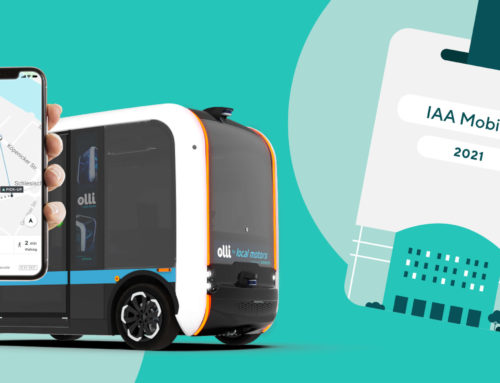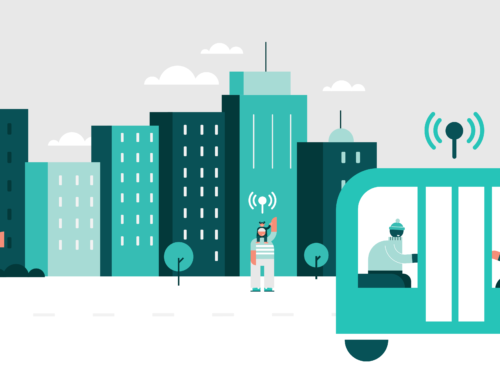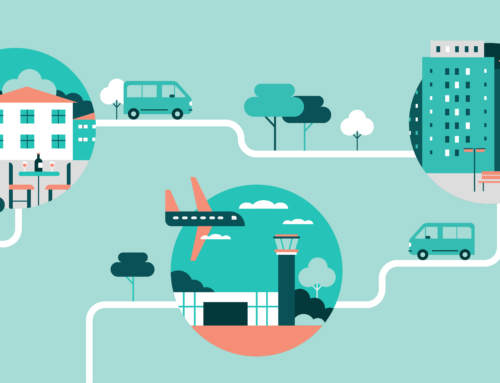The EU-funded INDIMO project aims to improve the social integration of digital mobility. We talked to Business Development Manager Thais Lamoza, who is responsible for the INDIMO project at door2door.
Urban mobility can be a challenge, even in areas with good public transport coverage. This is because many of the new mobility services are technology-based. So it is particularly important to identify early on whether services are a barrier for specific user groups.
Within the framework of the EU-funded INDIMO project, we at door2door are working on the Berlin pilot project, which covers the district of Marzahn-Hellersdorf. Business Development Manager Thais Lamoza is in charge of the project, and is focusing on user testing to analyze the experience of a specific user group. From this, important insights can be derived not only for door2door, but also for policy makers and other decision makers. We talked to Thais to learn more about the project.
Breaking down barriers and expanding mobility
Thais, you work on the INDIMO project for door2door. Can you tell us a little bit about the project?
The INDIMO project is a three-year, EU-funded project that runs until December 2022. It aims to improve the accessibility and social inclusion of digital mobility services.
Many of the new mobility services are technology-based and improve one’s individual mobility. Nevertheless, it is also important to recognize that this technology can be a potential barrier for certain user groups. For this reason, the INDIMO project aims to extend the benefits of digital mobility services to people who currently face barriers. To this end, the user perspective of these groups will also be included in the development and implementation of digital mobility solutions.
The project aims to enable researchers, developers and operators to design and implement digital mobility solutions that are accessible to all. In addition, it aims to motivate policy makers to integrate these services in the long term. Within the INDIMO project, there are five pilot sites in Europe that represent living laboratories: Berlin, Madrid, Galilee, Emilia-Romagna and Antwerp. The pilot projects involve the main stakeholders (developers, service providers, policy makers and citizens) in the discussions and joint creation of new or updated, inclusive and accessible digital mobility and logistics solutions.
Business Development Manager Thais Lamoza works for door2door on the INDIMO project.
A digital toolkit for mobility
What is the goal of the INDIMO project?
The goal of the INDIMO project is to create an integrative, digital toolkit for mobility. This toolkit should support political decision makers, developers and operators in developing digital mobility solutions that are universally accessible to citizens. The focus is on accessibility, as well as social and spatial inclusivity.
The INDIMO project has five main objectives:
- Improving the understanding of user needs in digital transport systems
- Improving knowledge of user needs in personalized digital transport systems
- Joint development of tools that help developers, operators and policy makers to create an inclusive, universally accessible and personalized digital transport system
- Promoting the universal design approach when planning and designing digital applications and services
- Influencing future policy by promoting the project results in European, regional and local policy-making
Pilot project Berlin: More mobility for mothers
What role does door2door play in the project?
door2door will conduct a pilot project focusing on user testing to examine the overall experience of different user groups. We will collect both data and findings regarding the inclusiveness of the technology, but also the user experience of a pooled ride.
Over the course of the project, we will explore the user requirements of selected user groups, which can then be translated into policies. In this way, we are enabling the development of generally accessible technologies, products and services. The goal is to achieve not only a better product, but to train all employees so that they can develop an understanding and sensitivity for accessibility. Researchers, product managers, software developers and operational staff are involved throughout the pilot field test. They will ensure that the appropriate framework and methodology is in place so that the user journey is well documented and all necessary data is collected.
Co-creation process: No decision on one’s own
Tell us a little bit about the project in Marzahn-Hellersdorf. How is door2door conducting this project and what are the goals?
In the INDIMO project we are focusing on the mothers of younger children in the Berlin district of Marzahn-Hellersdorf, whose mobility is partially restricted.
In the first phase we will conduct a ridepooling user test to collect information and better understand the user experience. After evaluating the first results, a later phase will focus on improving the universal accessibility of relevant products and services together with designers and software developers. In the final phase, the findings will be applied in a second field test to measure and evaluate the impact of adjustments in terms of accessibility. Together with other key stakeholders, we will be able to investigate what mobility problems these users face and how these can be improved.
Together with other key stakeholders, we will be able to investigate what mobility problems users face and how these can be improved.
A key element of the research is the co-creation process based on group discussions that take place regularly throughout the project. door2door will establish and coordinate the group in Berlin, focusing on women with children living in Marzahn-Hellerdorf. We want to bring together other mobility providers, policy makers, citizens and operators to understand the needs and requirements of the user group from a more comprehensive perspective.
The INDIMO project runs for three years.
Accessibility at door2door
How can door2door technology contribute to the inclusion of previously neglected user groups?
A new on-demand bus has a physical and digital interface, which means that different user groups face different obstacles. At door2door, we look at both interfaces from the user perspective. We investigate how to make ridepooling a better and more accessible experience and then translate this into our innovative technology.
For example, our Multimodal Passenger app offers the possibility to book rides for passengers in wheelchairs. In addition, a screen reader function ensures that access is guaranteed to the blind or those with reduced visibility. We also provide in-depth driver training to ensure a customer-friendly riding experience, so that everyone feels comfortable and safe during a ride.
What measures is door2door taking to make its products more accessible?
We actively develop our products to achieve a universal design. In addition to participating in this research project, we frequently contact and invite people to test our products. These people are know their own daily mobility needs and bring in valuable suggestions for our product development.
I believe that accessibility can be continuously improved by using technology-based services. What we really need is a sense of openness in order to see and understand how different people’s needs can be.



